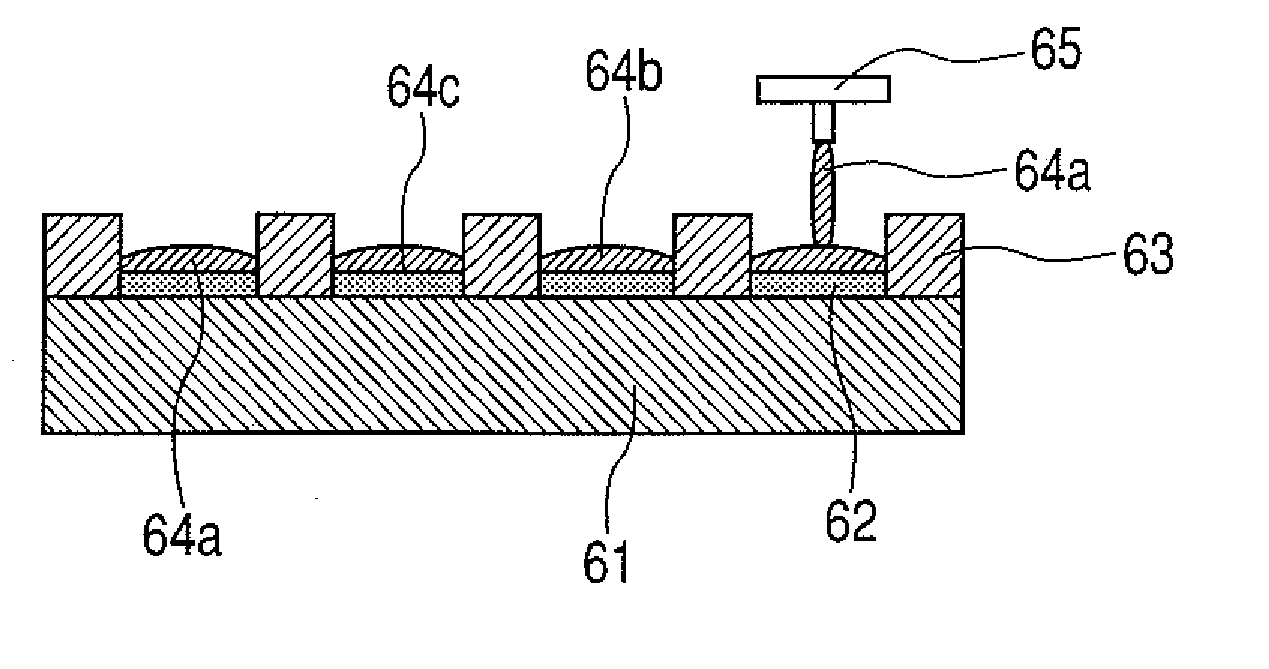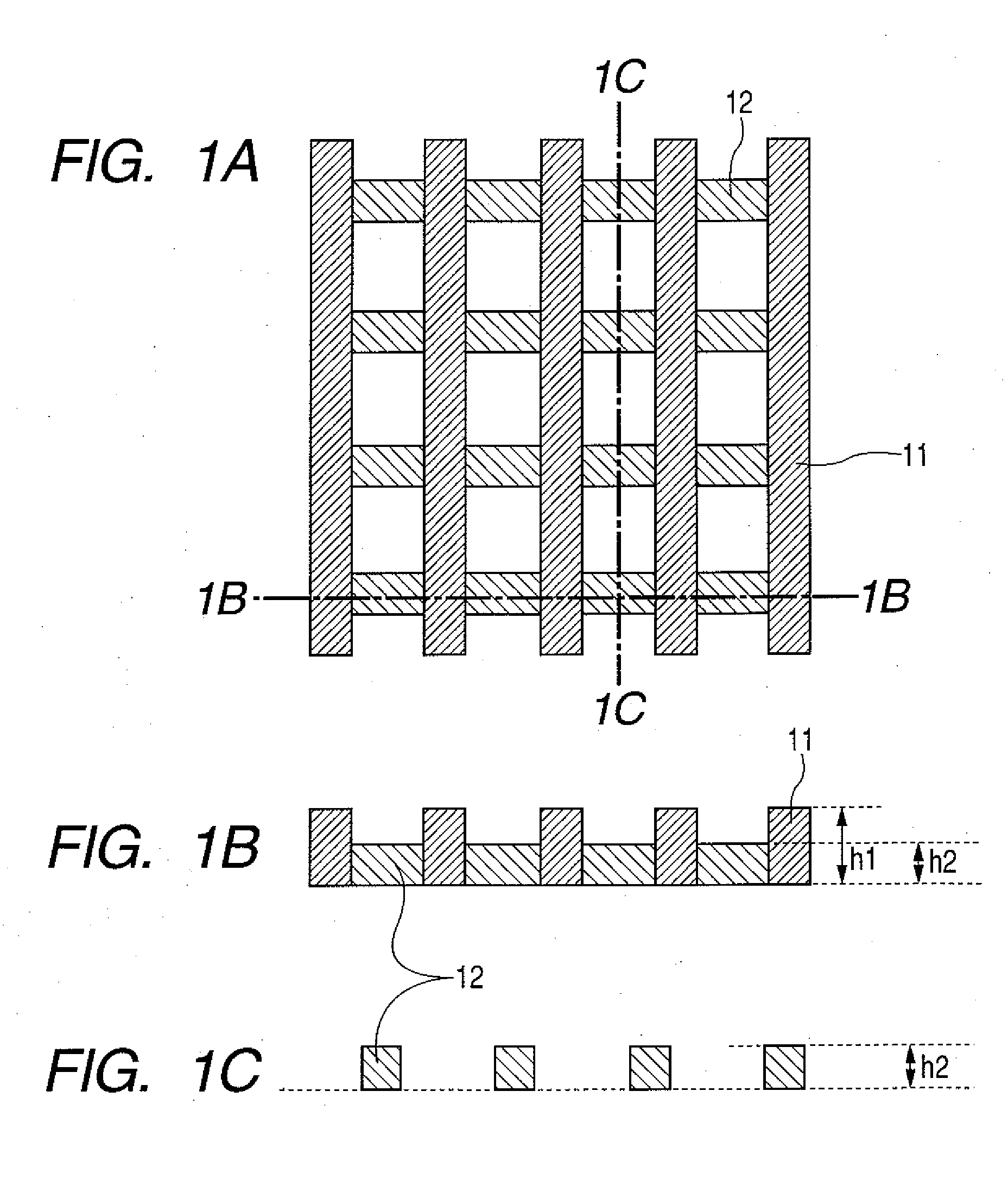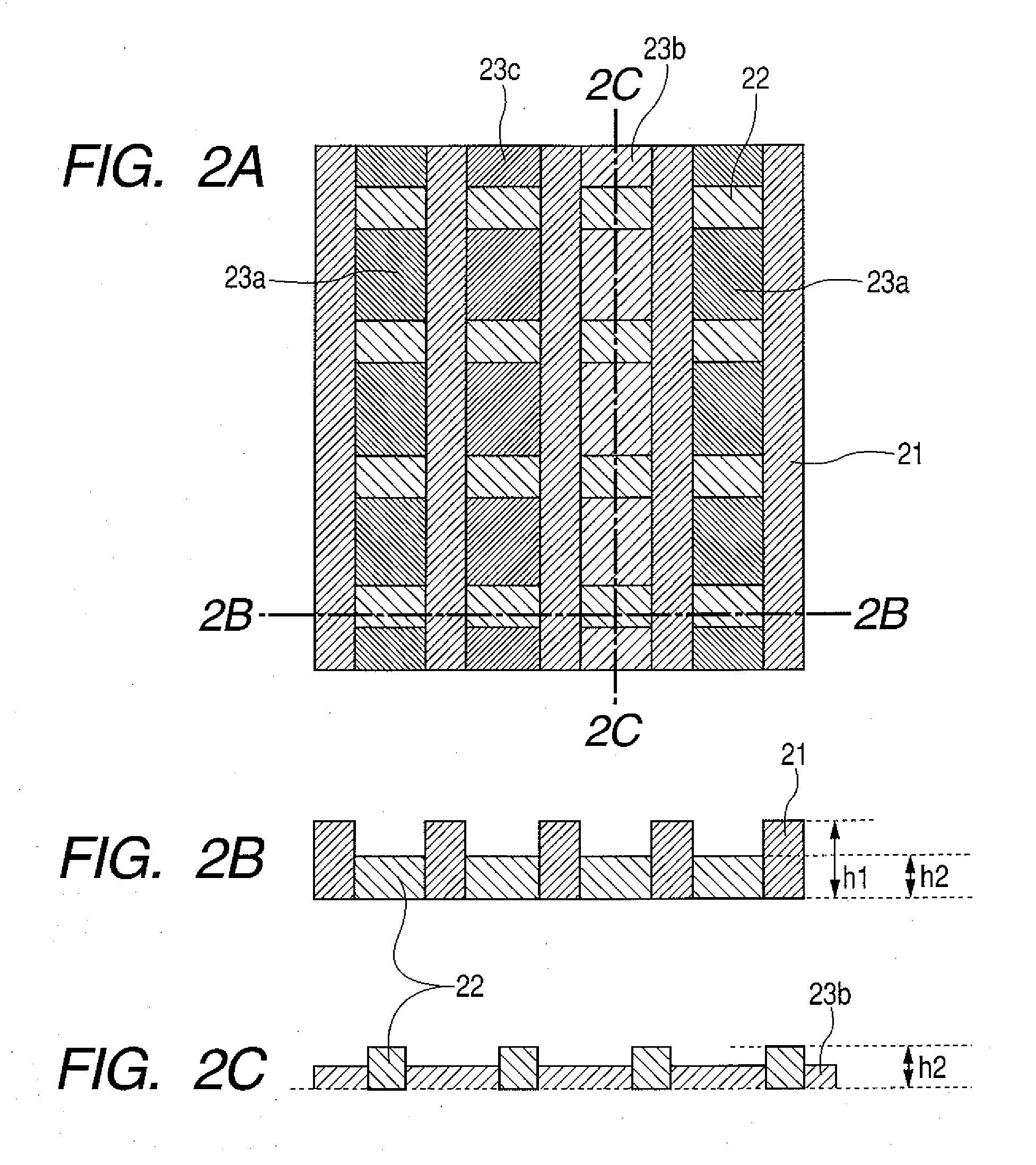Organic EL light-emitting device and production method thereof
a light-emitting device and organic technology, applied in the field of organic electroluminescence, can solve problems such as crosstalk between adjacent pixels of the same color, and achieve the effect of preventing crosstalk between adjacent pixels
- Summary
- Abstract
- Description
- Claims
- Application Information
AI Technical Summary
Benefits of technology
Problems solved by technology
Method used
Image
Examples
embodiment 1
[0034]FIGS. 1A, 1B, and 1C are schematic views showing banks of an organic EL light-emitting device according to Embodiment 1 of the present invention. FIGS. 2A, 2B, and 2C are schematic views showing a state in which an organic compound layer is provided in each of areas defined by the banks of the organic EL light-emitting device, according to Embodiment 1 of the present invention. FIGS. 1A and 2A are plan views, and FIGS. 1B, 1C, 2B and 2C are cross-sectional views. In the organic EL light-emitting device of the present invention, electrodes are provided under the organic compound layer (back side of the drawing) and on the organic compound layer (front side of the drawing). However, in FIGS. 1A to 1C and FIGS. 2A to 2C, the devices are represented schematically with the electrodes being omitted for convenience of presentation. The organic EL light-emitting device of the present invention may be of the so-called passive matrix type in which striped electrodes intersect each other...
embodiment 2
[0043]FIGS. 3A, 3B, and 3C are schematic views showing banks of an organic EL light-emitting device according to Embodiment 2 of the present invention. FIGS. 4A, 4B, and 4C are schematic views showing a state in which an organic compound layer is provided in each of areas defined by the banks of the organic EL light-emitting device, according to Embodiment 2 of the present invention. FIGS. 3A and 4A are plan views, and FIGS. 3B, 3C, 4B and 4C are cross-sectional views. In the organic EL light-emitting device of the present invention, electrodes are provided under the organic compound layer (back side of the drawing) and on the organic compound layer (front side of the drawing). However, in FIGS. 3A to 3C and FIGS. 4A to 4C, the devices are represented schematically with the electrodes being omitted for convenience of presentation.
[0044] In FIGS. 3A, 3B, and 3C, reference numeral 31 denotes bank portions of a column direction, and reference numeral 32 denotes bank portions of a row ...
example 1
[0053] In the present example, an organic EL light-emitting device according to Embodiment 1 was produced.
[0054] First, a method of producing an organic EL light-emitting device using the conventional nozzle printing is described below with reference to FIG. 6 (cross sectional view) and FIG. 7 (plan view), each of which illustrates organic EL light-emitting portions of the organic EL light-emitting device.
[0055] In the conventional nozzle printing process, organic EL layers, such as a hole injection layer and a light-emitting layer (red 64a, blue 64b, and green 64c) are formed between banks 63 by coating using a nozzle 65. At this time, the technique of continuously dropping a liquid ink (organic EL material, for example, 64) is adopted, so that the problem associated with the use of the conventional ink jet system such as shown in FIG. 8 that droplets of ink (organic EL material, for example, 84) go across the banks to be mixed into adjacent pixels is resolved.
[0056] However, as...
PUM
 Login to View More
Login to View More Abstract
Description
Claims
Application Information
 Login to View More
Login to View More - R&D
- Intellectual Property
- Life Sciences
- Materials
- Tech Scout
- Unparalleled Data Quality
- Higher Quality Content
- 60% Fewer Hallucinations
Browse by: Latest US Patents, China's latest patents, Technical Efficacy Thesaurus, Application Domain, Technology Topic, Popular Technical Reports.
© 2025 PatSnap. All rights reserved.Legal|Privacy policy|Modern Slavery Act Transparency Statement|Sitemap|About US| Contact US: help@patsnap.com



